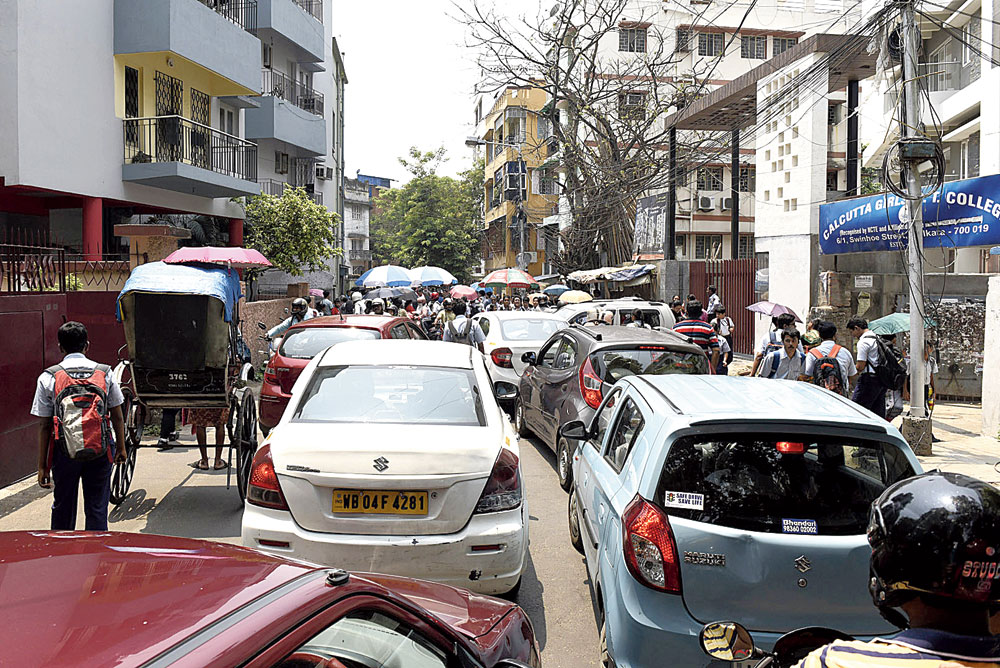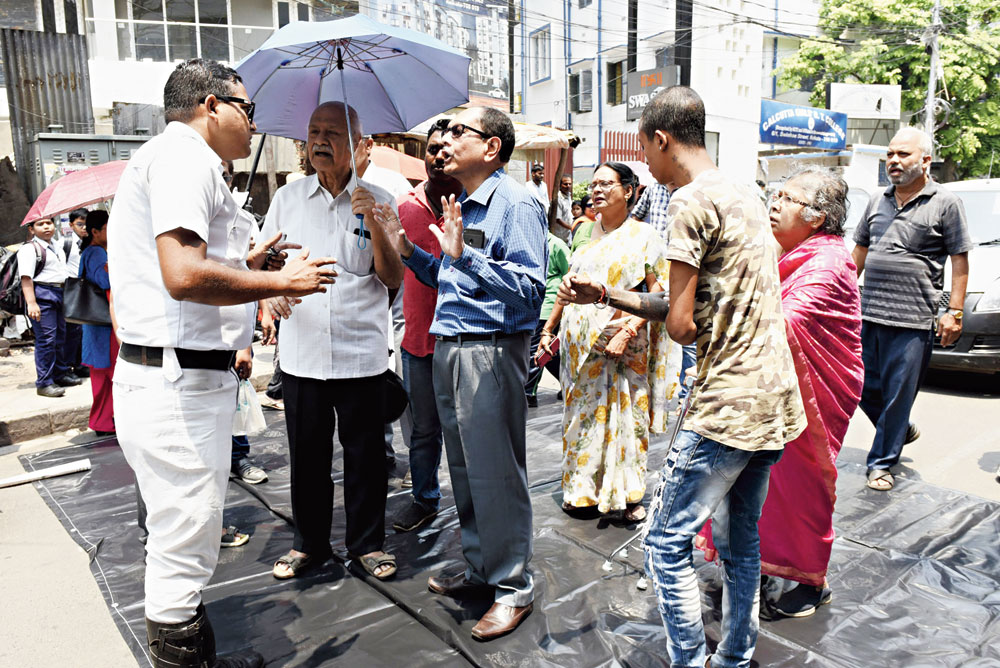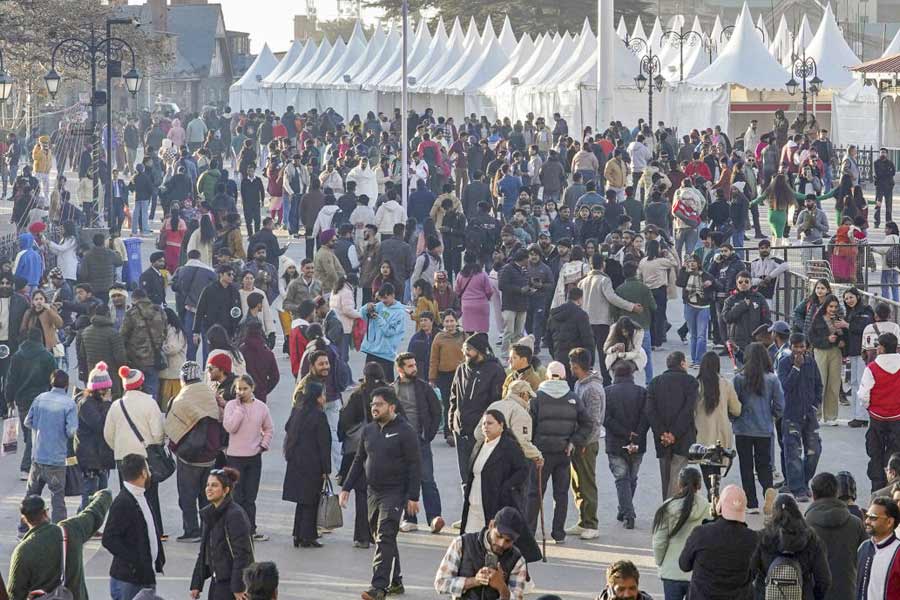Police on Monday promised to clamp the wheels of cars parked in front of gates and garages in a Ballygunge pocket after elderly residents blockaded Swinhoe Street to protest their daily harassment caused by vehicles ferrying students of South Point School.
The police also agreed to do away with the no-entry rule that prevents vehicles from entering Swinhoe Street from its intersection with Cornfield Road.
The rule forces residents of Ballygunge Place and surrounding areas to walk or take a detour through Cornfield Road or Jamir Lane to reach their destinations.
The officers, however, did not accept the residents’ demand that private cars and carpool vehicles ferrying children to school and back home be barred from entering the neighbourhood.
South Point has 12,000 students, around 6,000 of whom are in the senior section, located in Ballygunge Place.
Residents of the neighbourhood said the sheer number of students and their guardians, and the vehicles they travel in, made the situation unbearable. The narrow lanes and bylanes only worsen the problem.
Around 25 elderly men and women whose houses are in narrow lanes in the Ballygunge Place-Swinhoe Street-Jamir Lane-Bondel Road area spread a tarpaulin sheet across Swinhoe Street and started the blockade at 11.45am on Monday. The protest site was about 150m from the senior section of the school.
The protesters held placards that listed the problems the residents face.
Police officers, including assistant commissioner (traffic) P.R. Kumar, arrived at the spot soon after the blockade started and spoke to the protesters as the queue of cars, buses and two-wheelers ferrying children home from school kept growing.
“Cars in which children come to school and return home remain parked in narrow lanes of the neighbourhood for long hours. The situation becomes insufferable from 11am, when the morning shift ends and the day shift starts. The vehicle count increases manifold and people tend to park wherever they want,” said Kalyan Kumar Sen, 61, a marketing consultant.
At 11.30am on Monday, Metro saw a woman whose son studies in Class X at South Point park her Swift in a cul de sac, blocking the main gate of an apartment building. “I’ll be back in just three minutes with my son…. There is no proper parking facility anywhere near,” she said.
Even 10 minutes later, there was no sign of her.
Another common grouse of the residents was the no-entry rule that bar them from entering Swinhoe Street from its crossing with Cornfield Road.
Sipra Bose, 61, who lives in a bylane off Swinhoe Street and walks with the support of a four-legged walking stick, said she often had to get off a rickshaw with a bagful of grocery and walk home.
“I suffer from osteo-arthritis and a back problem, and walk with great pain. The no-entry board planted at the crossing of Swinhoe Street and Cornfield Road forces me to walk 10 minutes to reach home,” she said.
After listening to the residents, a senior police officer told them that they would be provided with a mobile number where they could report illegal parking.
“Please call the number if you find a car is blocking your garage or gate. If help does not come, call Gariahat police station. We will put a clamp on the wheels of such cars. The step will bring down the number of such cases,” the officer told the protesters.
The no-entry rule, he said, would be suspended immediately. Which means cars from the ITI crossing on Gariahat Road will be able to continue straight towards Ballygunge Place, Ballygunge Place East and Bondel Road without having to take a detour through Cornfield Road.
The police said the “no-entry” rule used to be in place from 11.15am to 1.15pm. The duration was later reduced to one hour and the board would be lifted at 12.15pm.
“The no-entry rule had been put in place because of a surge in the vehicle count when the morning shift of the school gives over and the day shift starts,” an officer said.
The residents lifted the blockade following the assurances from the officers.
Some of the parents stuck with their children because of the blockade criticised the residents. “If there is a school in the area, obviously cars will come and go. Is it right to keep children returning from school waiting for long in the sun?” asked Jamil Akhtar, who was on a motorbike with his son.
Krishna Damani of South Point School said the parents had been told in the last academic session not to park in no-parking zones.
He said the utilisation of school buses was not optimum. “A bus can replace many cars. But people want door-to-door service and buses cannot enter bylanes. So, the number of cars keep increasing,” he said.

Traffic held up on Swinhoe Street because of the blockade Picture by Sanat Kr Sinha

A police officer speaks to protesters on Swinhoe Street on Monday. Picture by Sanat Kr Sinha










